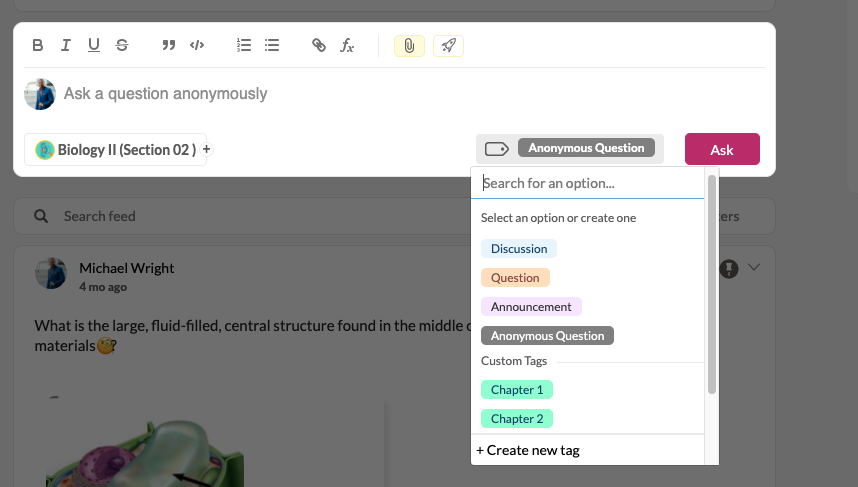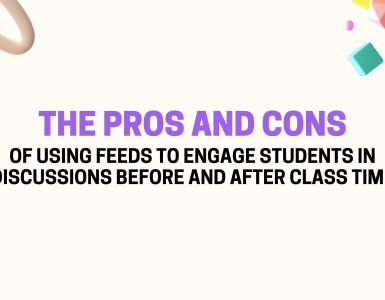The secret to high course motivation today? You guessed it; it is all about student autonomy. A recent survey made by Northeastern University found that students desire more freedom and autonomy when learning. Intrinsic values don’t only drive motivation. Recent studies show that external factors can heavily influence students’ performance in class.

In this guide, we share everything you need to know about motivation:
- What is motivation?
- Can instructors help with student motivation?
- Can the class environment impact student motivation?
- Tips to increase student motivations
What is motivation?

In everyday usage, “motivation” is frequently used to describe why a person does something. It is the driving force behind human actions. Motivation involves the biological, emotional, social, and cognitive forces that activate behavior.
Can instructors help with student motivation?
According to the self-determination theory- a framework that studies motivation and human personalities- people are often moved by external factors such as reward systems, grades, evaluations, or the opinions they fear others might have. However, people might also be motivated by intrinsic values, such as interest, curiosity, etc.

In most cases, when we are teaching undergraduate students, most of the motivation will come from external factors. Especially during the first few semesters. Why is that?
The first year of a student’s academic career tends to include general courses in their curriculum. Large general courses attract students from all disciplines. As a result, lectures are broader in topics rather than focus on specific areas. As a result, we see disengaged students who see themselves as just “another student” within a class of 100 or more other students.

The SDT framework encourages instructors to implement reward systems, feedback-driven activities, and course evaluations to promote student motivation throughout the semester early on. As students advance in their fields of study, we notice more intrinsic values affecting students’ motivations to attend class.
Therefore making it possible for instructors to help push students’ motivation to participate and attend classes through extrinsic motivation, especially in large general courses.
Can the class environment impact student motivation?
SDT research found that it is within human nature to want to evolve, grow, and master the social context “active organisms, with evolved tendencies toward growing, mastering ambient challenges, and integrating new experiences into a coherent sense of self.”

So to answer the question, yes, class environment and social context can either support or thwart the natural tendencies toward active engagement and psychological growth. This is why it’s essential to set a welcoming tone in class. The more students perceive their instructors as approachable, the better course outcomes instructors see.
Tips to increase student motivations
A study by Barnes and Nobles found that when students were asked what teachers could do to make learning more fun, helpful, and interactive, students responded in various ways.
When creating content for Gen Z students, don’t forget to add more technology, hands-on activities, and discussions.

#1 Create question-driven activities:
Getting students talking is a great way to build a comfortable ambiance before or after class. Don’t forget to use the Bloom’s taxonomy to help you develop materials based on different learning objectives and complexity.
- Make questions anonymous: Take the stress off students’ minds by allowing them to ask questions anonymously. Inside CampusKnot, instructors can start an anonymous thread and get anonymous feedback through polls.

- Celebrate each question: It’s important to give kudos and reward students when asking questions. If you’re rewarding them for asking questions, make sure to create a system that makes it easy to manage the load.

- Start with thought-provoking prompts: Whether you use Youtube, TikTok, or Ted Talks to get the conversation started, you must introduce video-driven content. According to our friends at Panopto, “you’re not prepared for Generation Z if you’re not prepared for video.” Here are a few questions you can try out this week:
- Ask me two questions
- Tell me what you liked about this chapter
- Summarize this lesson/semester in 4 emojis
- Tell me one way you applied what we learned this week in your routine
- Share one positive thing that happened to you this week
#2 Encourage feedback:
In today’s classroom, feedback has become an essential component of a learner’s learning process. Collecting feedback can provide educators and students clear guidance on performance, self-awareness and can increase class morale while learning.
- End-of-the-month surveys: Running end-of-the-month surveys allows instructors to modify the class as needed, make students feel like they’re a part of a class community, and build rapport. Some great tools to help you run your surveys:
- Google Forms
- CampusKnot polls
- Survey Monkey

- Weekly assessment polls: This can help you gauge how students are handling class material. At the end of the week, run a poll asking students how much of the week’s content they were able to master.
- Make it time-based: Make all activities time-based. This ensures all students post questions at the same time. Always allow a minimum of 5 minutes so that students have time to post questions.
#3 Group-based learning activities:
Let learners apply what they’ve learned to solve real problems. Students can relate to the subject matter more when they can see how it ties into real-world situations.
- Run case study simulations:
- Create a persona for each case study. We highly encourage you to give each hypothetical figure a name.
- Make your case sound real. Frame your case study with a compelling plot.
- Omit the ending. Yes, that’s right, make your students draw their conclusions for this plot. This will encourage more discussion, mainly if you have divided students into groups.

As motivation continues to become an integral part of student’s success in the course, we hope you consider some of our tips when coming up with course materials.
Key takeaways:
- Motivation is the driving force behind human actions.
- Instructors can help push students’ motivation to participate and attend classes through external factors such as reward systems, grades, evaluations, etc.
- Class environment and social context can either support or thwart the natural tendencies toward active engagement and psychological growth.
- Create activities for class that support and encourage quesetions, group-base learning, and visual content.
Ready to jump in and create activities that encourage participation? Here are our top 3 resources on the CampusKnot how to blog to help you get started:




